The Leupold DeltaPoint Pro is a well-recognized optic as it’s been a long-time favorite red dot sight dedicated for pistols.
But how does it compare to newer optics on the market?
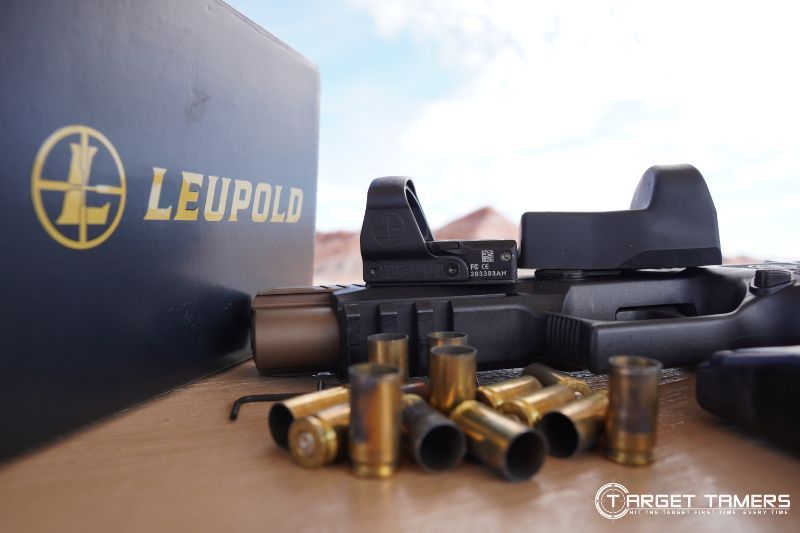
The Leupold DeltaPoint Pro is designed to be a high-end red dot sight that has a solid reputation behind it given its early entrance into the micro RDS world when few were available. Given the various alternatives now available, the DPP competes with MST, a huge lens, and overall quality.
A good question to consider is, is it outdated, or does it still stand to offer value considering affordable alternatives?
We purchased the Leupold DeltaPoint Pro and put it to the test, to answer this question.
Find out the results of our hands-on testing below!
Quick Overview...
What We Like: MST (Motion Sensor Technology)
What We Don’t Like: Button location
Best Uses: Casual Range Use, Professional Use, Law Enforcement, Competition Shooting, Huge Viewing Window
- Magnification: 1x
- Coatings: FMC
- Eye Relief: Unlimited
- Reticle: 2.5 MOA dot
- Adjustments: 1 MOA
- Battery Life: 300-1600 hours/ 1x CR2032
- Dimensions: 1.8 x 1.3 x 1.05” / 2 oz
- Mount: Leupold DPP footprint (Shield RMS) / No plate or Pic mount included
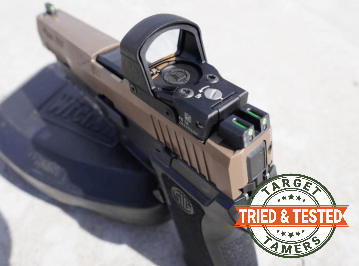
Our Verdict: Though the Leupold DeltaPoint Pro is not the newest DPP model and has a few quirks that may prove to be a deal-breaker, it has the essentials and ranks in with high-end micro red dot sights. This is proven with its optical and build quality, large viewing window, and MST feature.
Why Trust Me?
After hundreds of hours of hand-testing pistol red dot sight in the field and on the hunt, and thousands more hours researching, writing, photographing and creating videos about them, I feel I have earned the title of expert when it comes to optics!
Optics are not just my passion, but also my full-time job!
I get my hands on as many of the optics I test as possible (through buying, borrowing or begging!) and run them through their paces to make sure they will perform out in field.
Check out our optics testing process here.
Over a decade of experience competition shooting, professional use and casual range use has been integral in putting together this Leupold DeltaPoint Pro review.
Who is the Leupold DeltaPoint Pro Best Suited to?
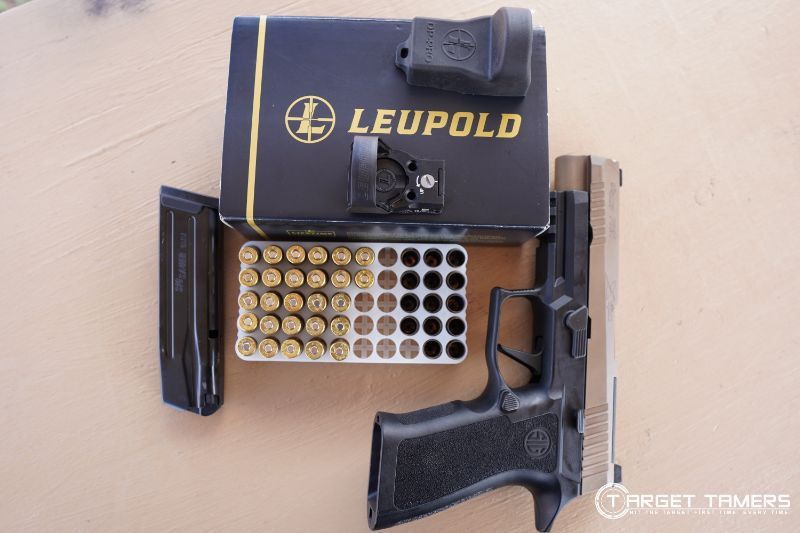
The Leupold DeltaPoint Pro has a long-standing reputation when it comes to pistol sights. It’s expensive compared to alternatives and is found wanting in terms of battery life and NV compatibility. However, as a high-end competitor, it serves as a reflex sight for both casual and professional applications.
There is another DeltaPoint Pro version that offers two illumination intensities that are night vision compatible bringing the total illumination to 10 settings versus the eight in the non-NV model. Other than that, all other features and battery life are the same.
Given that the model tested is the non-NV one, it stands to be a sight that is adequate for casual range use, self-defense, competition, and some professional applications in law enforcement.
How Does the Leupold DeltaPoint Pro Perform?
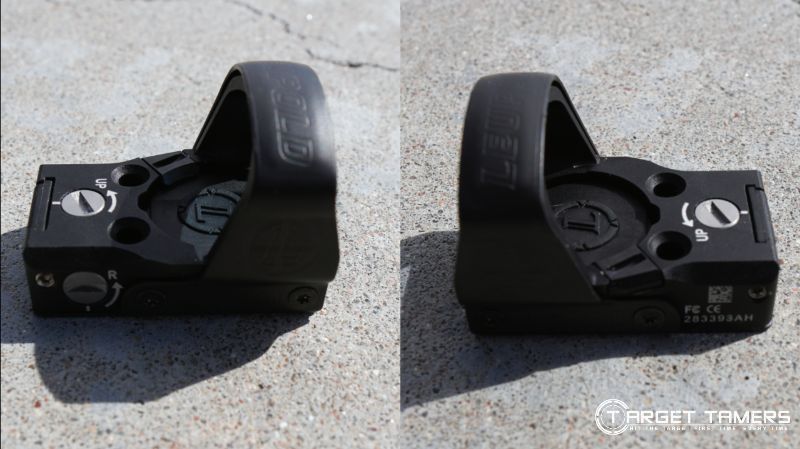
Overall, the build quality is excellent. It’s submersion-proof down to 33 feet and nitrogen-purged for fogproof protection. The only thing that might be a concern is the exposed spring coil to the battery compartment inside the housing. It could see rust over time when exposed to the elements.
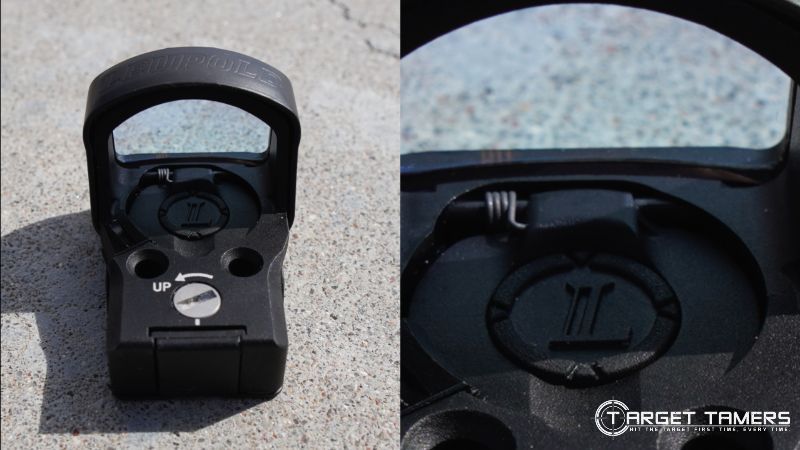
The 1 MOA turrets are a non-issue. They turn positively with tactile and audible clicks. Though not stiff to adjust, they are exposed but unintentional adjustments shouldn’t ever occur.
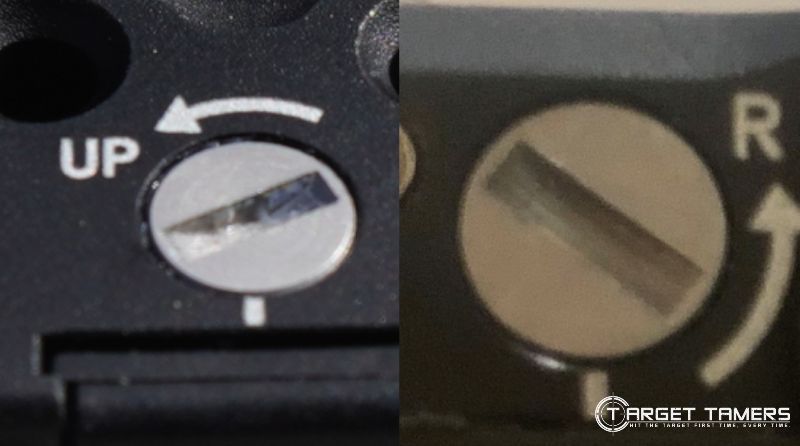
I found the 2.5 MOA size of the dot excellent for shooting groups out to 25 yards. Though the Leupold DPP tracks accurately, groups will largely be dependent on one’s pistol shooting skill, eg. trigger control, hand grip, stance, etc.
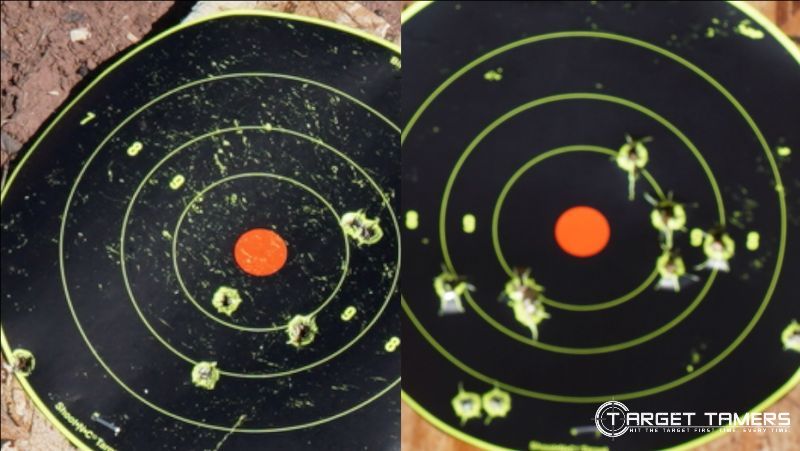
The DPP is on the larger side for a micro RDS and can block standard height irons. Taller height irons will be needed to co-witness and have access to them in case of RDS failure.
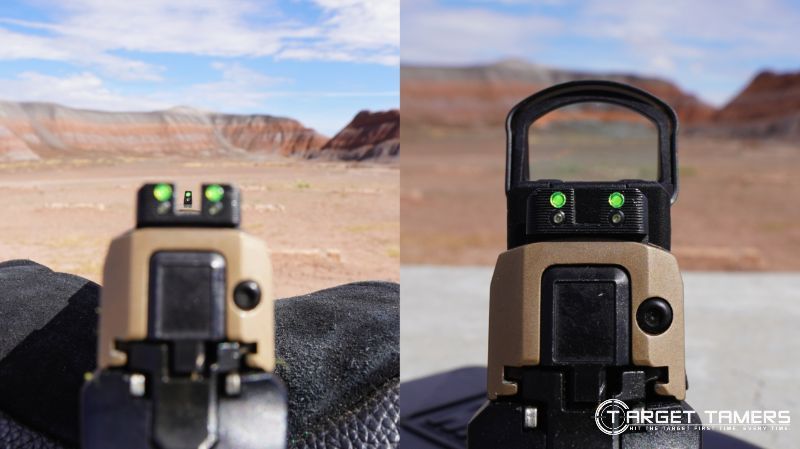
In general, the Leupold DeltaPoint Pro was enjoyable enough to sight in. The illumination seems a little on the dim side at max setting but works well for most conditions. The huge viewing window is an excellent benefit for maximum awareness and fast target acquisition.
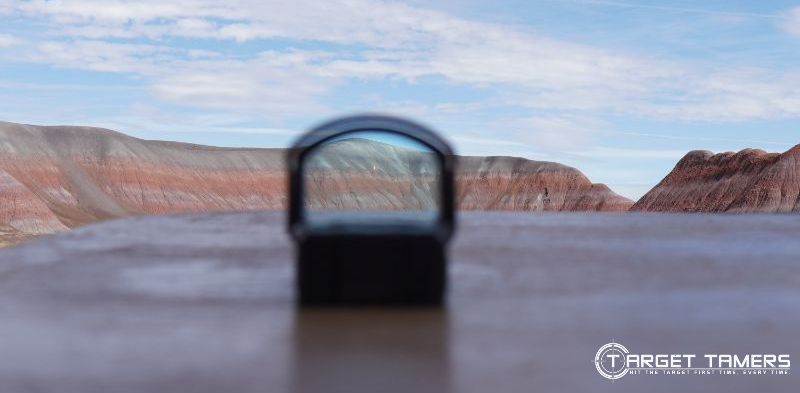
Features & Benefits
MST (Motion Sensor Technology)
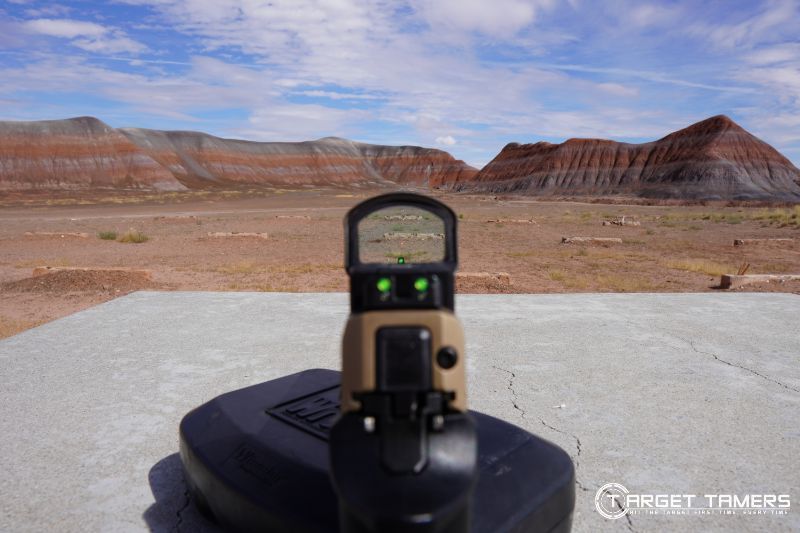
MST stands for Motion Sensor Technology and is Leupold’s dot activation and deactivation tech akin to Sig Sauer’s MOTAC and Holosun’s Shake Awake technologies. The dot deactivates automatically after five minutes of non-motion and reactivates upon sensing motion.
Put simply, it works. I actually forgot many times that it had this feature as every time I brought the P320 up, the dot was there ready for work.
Leupold is smart to add this battery conservation feature to the DeltaPoint Pro as without it, I don’t think it would be a valuable competitor in the red dot sight field. With the poor battery life it offers, the DeltaPoint Pro certainly needs all that it can get to help conserve battery life!
Optical Quality
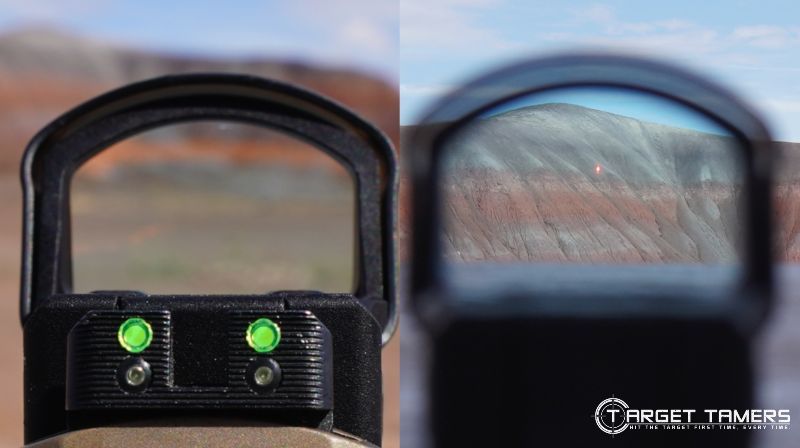
The Leupold Delta Point Pro is well-known for its large viewing window. It’s one of the larger ones with an approximate 1.05” x 0.71” lens. The outer aluminum frame that houses the optical window and shields the battery compartment runs wider so that it somewhat hangs over the edge of the slide.
Though the frame does, the base does not. It fits the P320 slide perfectly.
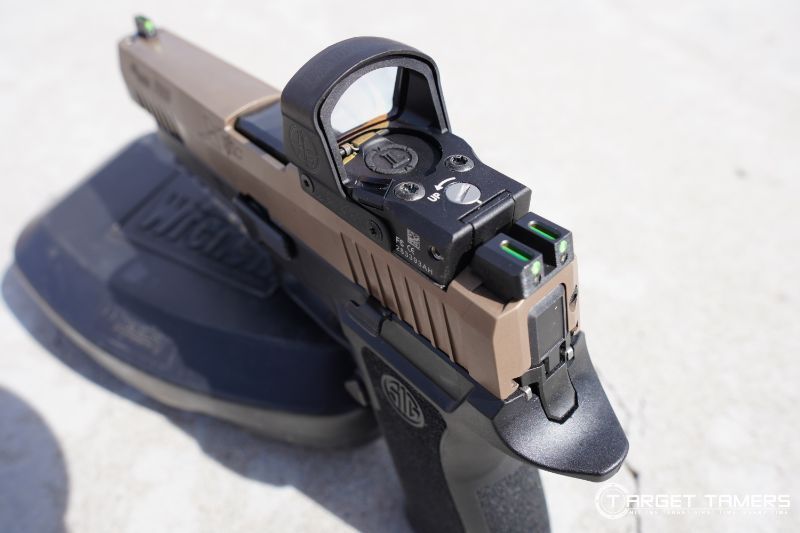
During daylight, an excess in lens coatings is not easily recognizable. In indoor or lowlight conditions, a very slight blue tint is noticed but it’s far from distracting. The minimal coatings provide a reasonable sight picture with natural fidelity.
I certainly had no issues with optical quality and was pleasantly surprised by the sharpness and clarity looking through the DPP.
Illumination
There are eight illumination intensity settings on the Leupold DeltaPoint Pro. They are adjusted via single push-button control on top of the battery compartment. To toggle between brightness settings, the single button must be used as it switches between intensities.
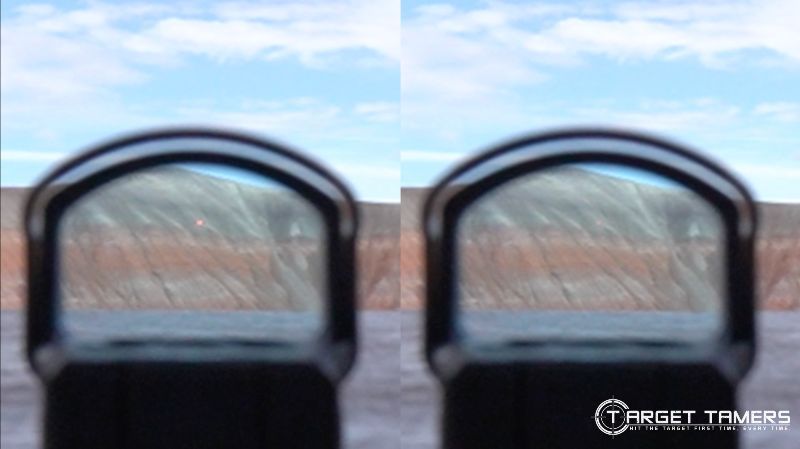
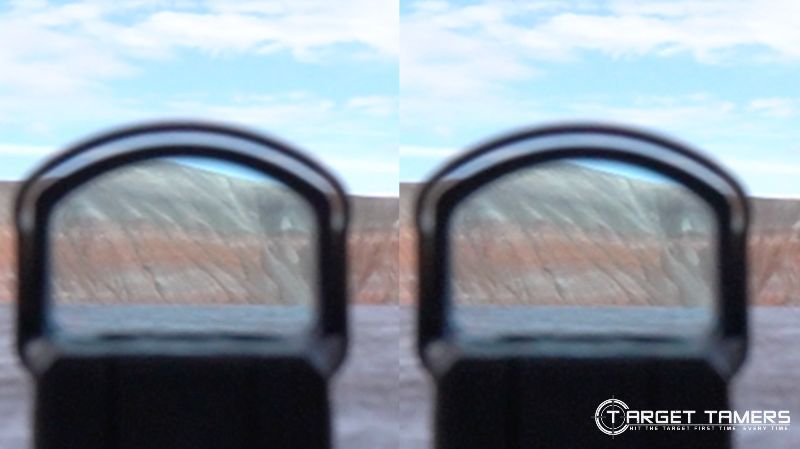
Max illumination is bright and visible, but I wouldn’t say it’s nuclear bright – it could stand to be brighter in my opinion. Even so, I preferred setting six at the range to reduce the star bursting I was seeing at max illumination to see 1” squares at 25 yards.
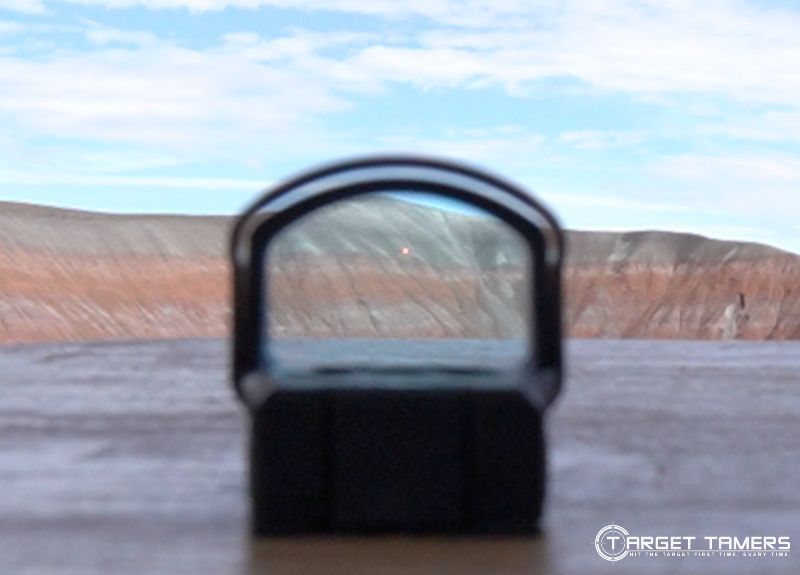
The 2.5 MOA dot is a little on the small side for a pistol, but I know many might prefer that size over the 6 MOA dot especially if 25-50 yards is a range they’ll be covering.
The Leupold dot is excellent as far as sharpness goes, and it didn’t trigger my far-sightedness given the arm’s length position when shooting with a handgun. The dot will flash about five times when it’s hit both max and dimmest illumination settings.
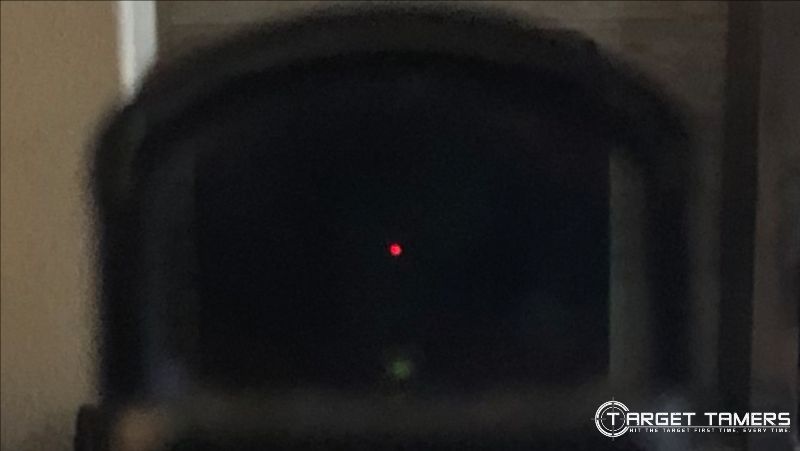
The dimmest settings are fantastic for low-light conditions. Max illumination will produce star bursting and reflections. With where the button is located, it’s best to be intentional about setting the right intensity for the conditions before you get on shift or anticipating when you will need to use it.
Mounting
There are a lot of mounting options for the Leupold Deltapoint Pro as it can be used on pistols, hunting rifles, shotguns, and AR-15 rifles. The DPP can be mounted to a Picatinny rail as Leupold has an array of mounts suited to various mounting options, but they do come at an additional cost.
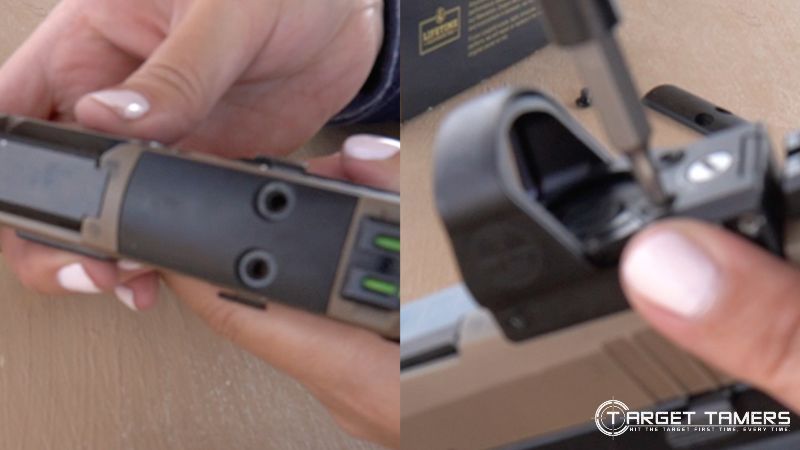
In the box, the DPP comes with two Allen keys and two screws for mounting to slides with the same footprint.
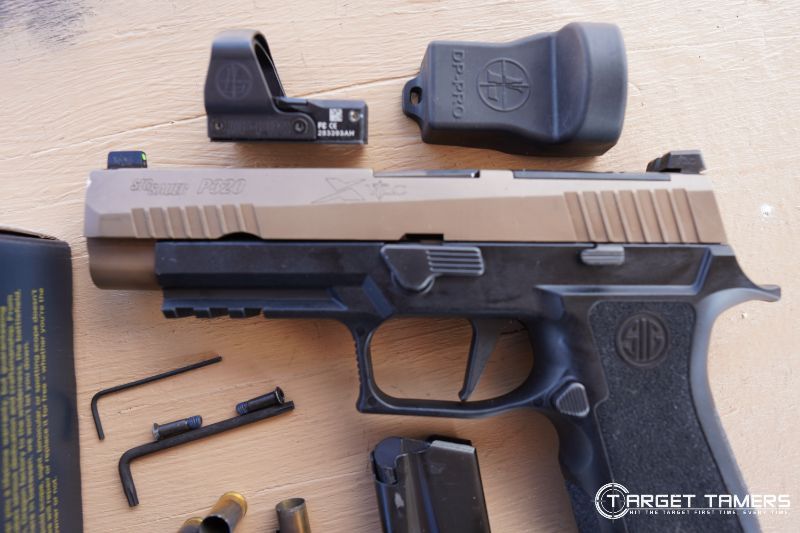
Mounting the Leupold DPP was without issue. I removed the cover plate from the Sig P320 and the screws. The DPP fit perfectly, and the included screws were torqued down to 25 in-lbs. No plate adapters were necessary as the Sig Sauer P320 series have the Leupold DPP footprint that is also the same as the Sig Sauer Romeo 1 Pro.
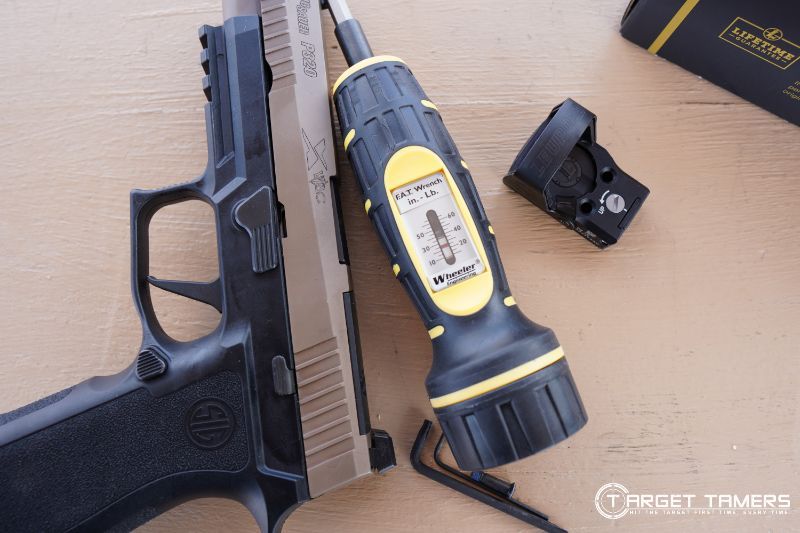
Battery
The Leupold DPP reflex sight comes with a CR2032 battery that powers the illumination between 300 to 1600 hours based on the illumination intensity. Even with MST, the battery life is poor compared to alternative pistol sights.
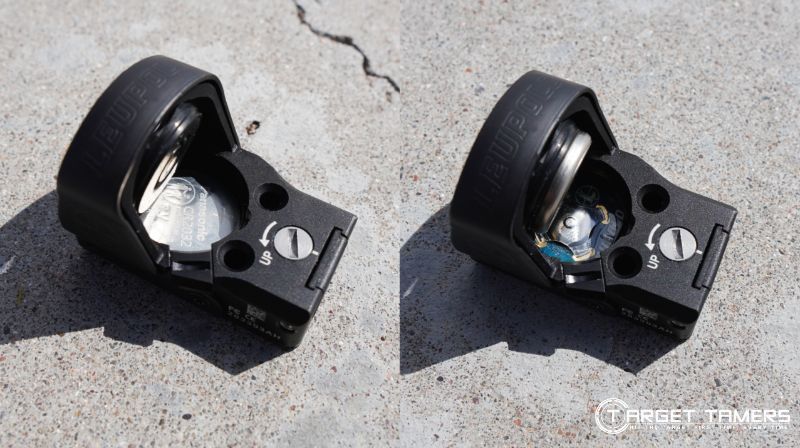
The compartment has a tool-free design which I like. It’s a spring-loaded compartment that’s magnetic and keeps the battery attached to the lid even when open. Given how early the DPP was manufactured, it’s an awesome feature that it has a top-loading battery compartment – no removing the red dot just to change out the battery!
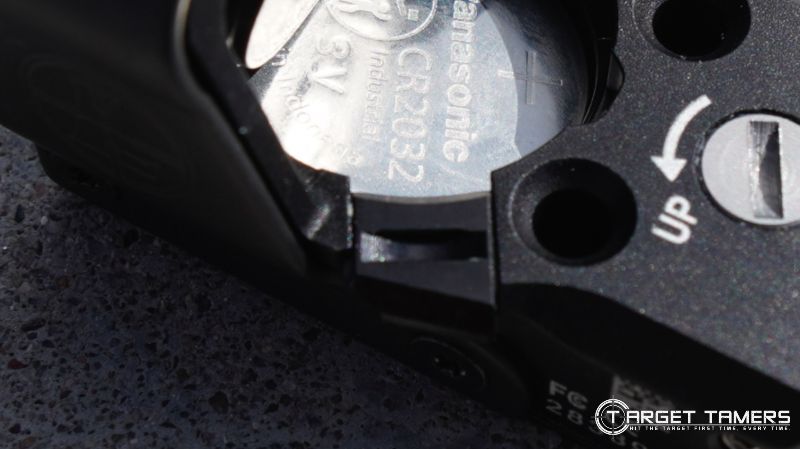
There has been some concern that racking the slide on a holster or belt will unintentionally trip the battery compartment open via the notch. I don’t see that happening as it’s secure and holds tight, and you have to be intentional about flicking the switch outwards. But I don’t rack my slide like that anyways.
Limitations
The Delta Point Pro illumination on/off button is located in between the lens and is right on top of the battery compartment. To adjust illumination, the finger blocks the view of the dot and the LED housing inhibiting simultaneous viewing of the dot to confirm changes.
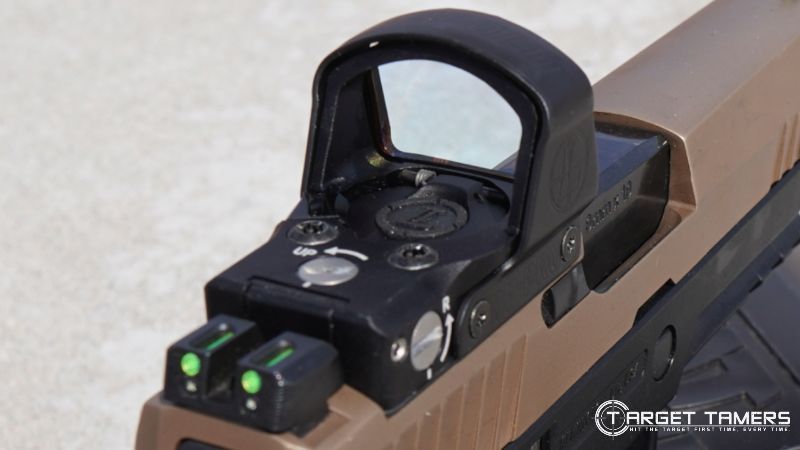
I’ve found a way around it by using a small tool to hit the button while I’m at the range, but it doesn’t always seem to work. If I use my left finger and tilt my head to the right side, I can see illumination intensity change as I press the button. However, it’s far from an idealistic solution for realistic engagement.
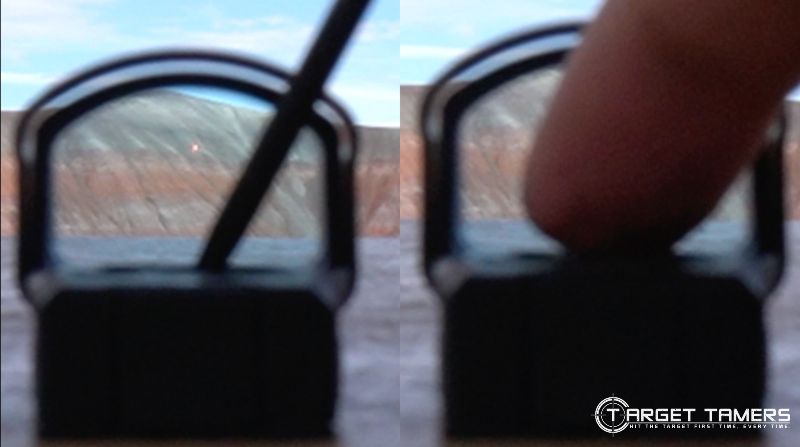
The only upside I can see to its concealed and not so accessible location, is that it’s not going to be unintentionally bumped.
If you want to check out a competitive alternative RDS with better illumination control placement, our Burris Fastfire 3 VS Leupold Deltapoint Pro comparison is a must read!
Popular Questions
The DeltaPoint Pro red dot sights are made at Leupold’s manufacturing facility in Beaverton, Oregon. The Leupold DPP is a made-in-USA optic.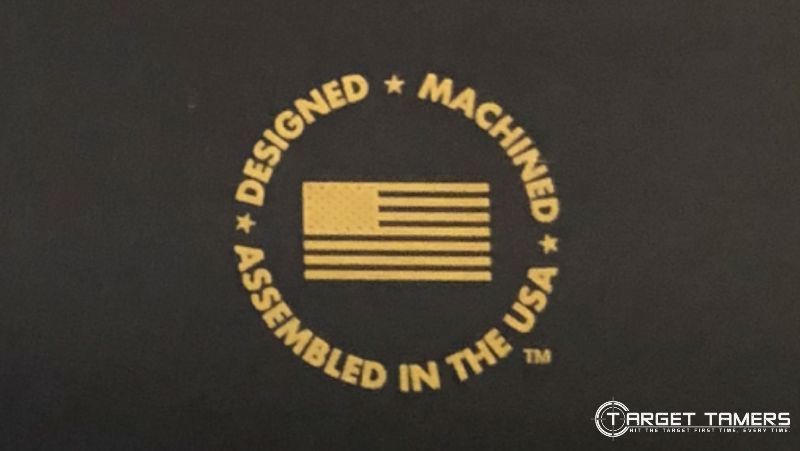
Standard height irons are unlikely to be tall enough to co-witness with the Leupold DeltaPoint Pro. Taller sights may be needed. There is a slot at the rear end of the DPP that allows for attaching Leupold’s adjustable rear CQ iron sight. This must be purchased separately.
Below: Unable to co-witness with standard height irons on the P320 X-VTAC.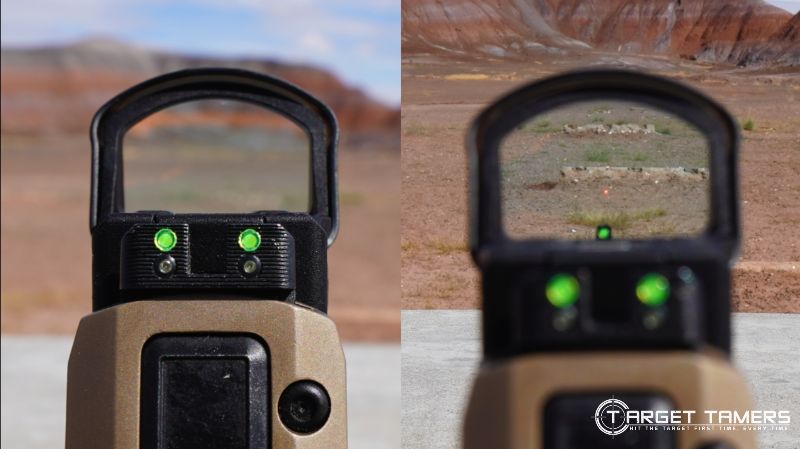
The Leupold DeltaPoint Pro and the Trijicon RMR do not share the same footprints. An adapter plate will be needed to mount the appropriate red dot sight. Plates are usually included with the firearm but may need to be purchased separately.
Below: Leupold DeltaPoint Pro base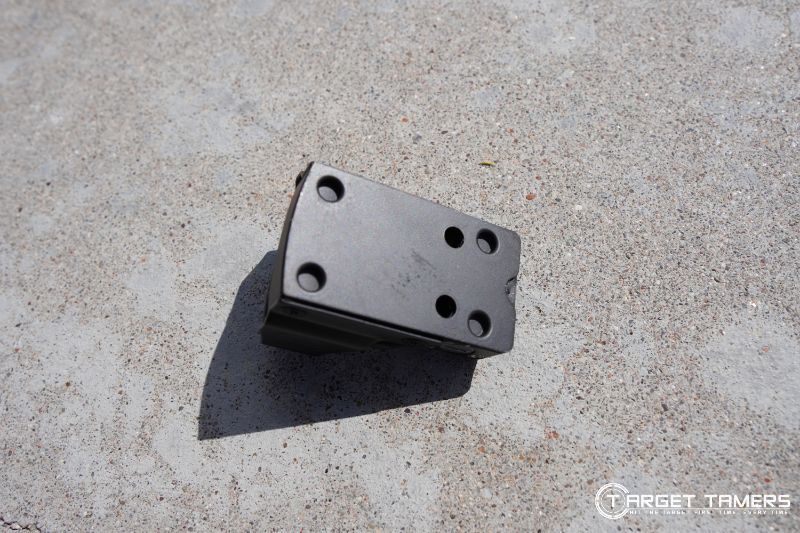
The Leupold DPP will mount to a shotgun given that the correct mount is purchased. There are various mounting options available for the DPP, but they must be purchased separately. The Leupold DPP can handle recoil up to .458 SOCOM.
In general, the Leupold DeltaPoint Pro comes with two mounting screws with the proper thread pitch and length for mounting the DPP to a pistol slide. It fits Sig Sauer P320 series handguns without mounting plates. For other slides, mounting plates that came with the firearm are likely needed.
Below: Two mounting screws included in the box that fit the Sig P320 perfectly.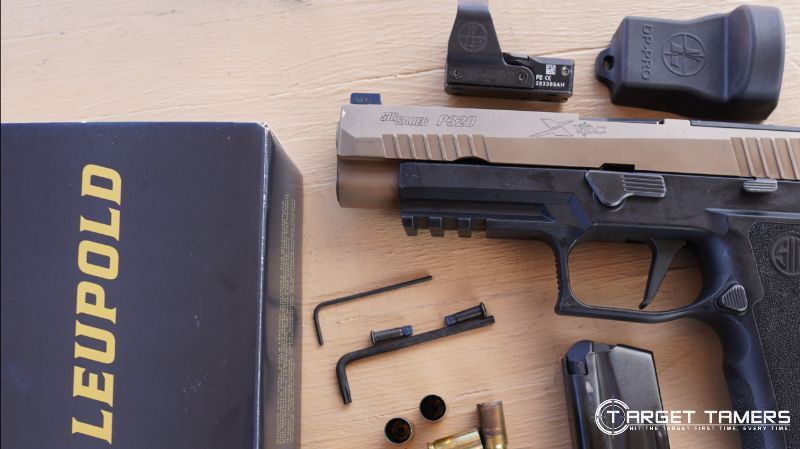
Conclusion
Overall, there are a few things about the DPP that render it below the competition. It’s on the expensive end for a pistol red dot sight that only offers up to 1600 hours for continuous operation, illumination button control that essentially blocks visual of the dot, and it lacks NV compatibility.
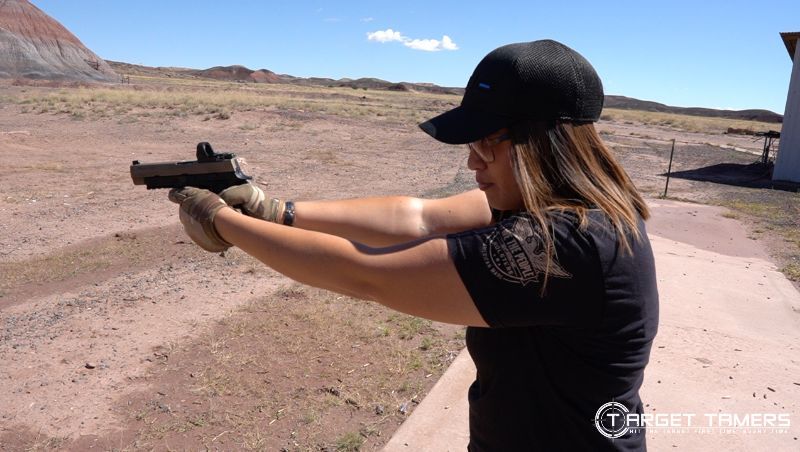
As such, it serves best on its own (not being used with NV) and perhaps as a casual range sight or possibly on a self-defense firearm where the MST is not being activated when it’s not actually needed.
Thanks to its large FOV and exceptional build quality, it remains far from obsolete. Though I’ll need to switch out the irons, it will serve me well for casual use on the Sig P320 X-Vtac.
Further Reading



